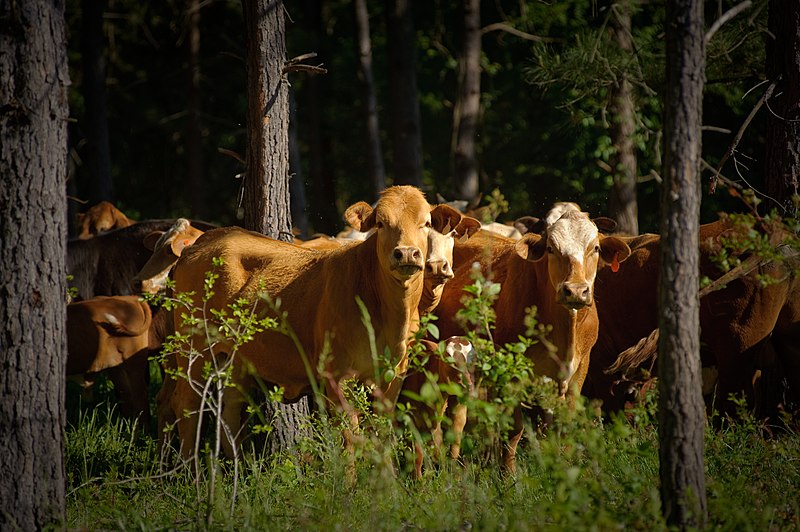Catastrophic wildfires are becoming more frequent, more intense, and more destructive in California. They are burning in a variety of vegetation types — from high-elevation northern-Californian coniferous forests to southern-Californian chaparral ecosystems — and some (e.g. the Thomas [2017] and Tubbs, Sonoma County [2017]) have been fanned by unusually strong wind events. Despite these differences, however, there is broad consensus that a major part of the uptick in catastrophic fires is the state’s failure to adequately manage fuel loading in range- and forested lands.
The state is currently in the process of finalizing a document, the California Vegetation Treatment Program (VTP), which will serve as an update to their 1980s document, “Vegetation Management Program.” This unwieldy document serves as the blueprint for how the state will strategically approach fuels management. Practices such as mechanical treatments (e.g. mowing, mastication), manual (e.g. weed-whacking, weed-pulling), herbicide application, and prescribed fire will be included in the VTP, as they were in the 1980s VMP. One remarkable new addition, however, will be the inclusion of grazing as an approved fuels management treatment. Accordingly, there is renewed effort around the state from the livestock and ranching communities to communicate how domestic livestock can be integrated into a responsible, long-term fuels management program.
Fundamentally, we need to think about two kinds of grazing: 1) what might be called “traditional” grazing, and 2) what might alternatively be named “targeted” grazing. Traditional grazing is how we have always thought about grazing: in California, cattle are managed in extensive rangeland pastures to produce meat. Alternatively, the ultimate purpose of targeted grazing is to have a particular species of livestock graze at a certain density for a specific period of time for the purpose of managing vegetation. In this model, the saleable product is not meat, milk, or fiber, but instead acres of biomass cleared, thinned, or removed.
Importantly, however, it should be noted that both kinds of grazing can and do manage fuel loading in range- and forested lands in California. This is a point the ranching community has worked hard to make in the popular press recently. See, for example, the recent video produced by the National Cattlemen’s Beef Association featuring cow/calf producer Richard Atmore of Ventura, California, discussing how grazing on his ranch just outside the city limits reduced impact of the Thomas Fire on urban residents. (https://www.facebook.com/watch/?v=2365669617085882). My own experiences conducting soil and rangeland monitoring after the Thomas Fire confirm the same phenomenon. All five of the ranches I sampled had areas of grazed grassland that did not burn at all during the fire immediately next to shrubland areas that burned at a high intensity [see Figure x]. In this way, it is critical to recognize the good work that traditional grazing already does to reduce the sorts of fuels that might otherwise exacerbate fire in wildlands or on the wildland-urban interface.
But again, targeted grazing is different. It is an old idea (livestock grazing) applied in a novel manner. Increasingly, homeowners, private land owners, municipalities, public agencies, and utility companies across the state are using grazing animals where it’s too steep to mow, too labor-intensive to hand-pull weeds or run a masticator, too challenging to execute a prescribed burn, or too expensive to apply herbicides.
It remains to be seen, however, how effective targeted grazing with cows, sheep, and/or goats will be on the Central Coast. While there is ample evidence that these livestock species will consume the naturalized annual grass species common in the area, there is less direct evidence of their ability to consume shrub and sub-shrub species common to our local chaparral and coastal sage scrub communities. Certainly, more work and experimentation will need to be done if and when targeted grazing for fuel load modification becomes more widespread. Animal genetics (insofar as it may impact an individual animal’s preference for certain plant species) and augmenting the timing of use may both be important factors that will influence success. Research suggests that targeted grazing might be most effective 1) in the years after a wildfire, when large-diameter shrubs have been removed and begin to regrow; 2) as a follow-up to maintain other fuel treatments, like mastication; or 3) as a way to thin fuels — though not necessarily to remove them entirely — to reduce fire intensity and rate of spread.
It is important to recognize that targeted grazing is not exactly like running a traditional ranching operation, and targeted grazing operators face a unique set of challenges. They must be mobile (with their fencing, stock water, handling equipment, etc.), they must provide protection from livestock predators (if running sheep or goats), they must know how to effectively communicate with landowning clients and the general public, and they need to be certain they can provide forage for their livestock year-round (even if the paying jobs are seasonal). As new operators that may or may not have previous livestock experience increasingly offer their services, it will be important to provide resources to ensure their success.
California’s decision to formally recognize grazing as an important fuels management practice in their forthcoming Vegetation Treatment Program should have a profound effect on the frequency and scale of use of both traditional and targeted grazing. It is an exciting opportunity for the livestock industry to meaningfully help address and provide solutions for the wildfire threat in our region.
Matthew Shapero is the livestock and range advisor for the University of California Cooperative Extension in Ventura and Santa Barbara counties.




